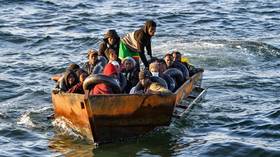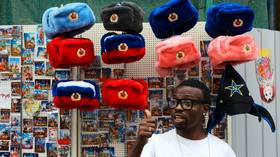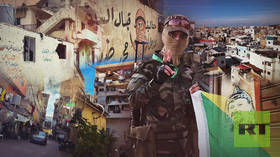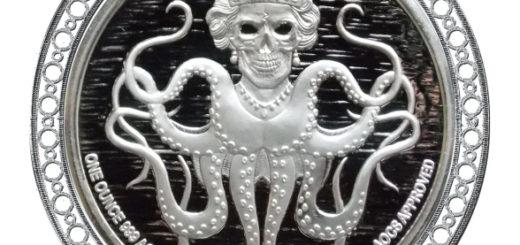Khoi-San Bereft of Lands, Identity & Culture Resulting From SLAVERY By Satanic Dutch Royals
Western arrogance: European royals have deprived these people of their homes, freedom, and dignity and refuse to admit it
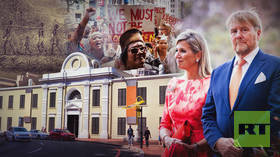
There were extraordinary scenes in October outside the Slave Lodge in Cape Town when King Willem-Alexander and Queen Maxima of the Netherlands visited the building, the same place where Dutch colonists once enslaved thousands of Africans and Asians.
The royals were confronted by a small group of leaders of the Khoi-San – an amalgamation of the Khoi and the San non-Bantu people, a conventional term for the descendants of the first indigenous people of South Africa. Protesters wanted to know why the royals had not included a meeting with the descendants of the Khoi-San during their three-day state visit and why there was no direct apology for slavery or any attempt to deal with the question of reparations. Though Willem-Alexander brought apologies for slavery earlier in July, speaking in Amsterdam, people here, in Cape Town, got no answers to their questions.
Between 1679 and 1811, the Slave Lodge housed 9,000 slaves who belonged to the Dutch East India Company, or Vereenigde Oost-Indische Compagnie (VOC), in atrocious conditions. It’s now a museum dedicated to the memory of the indigenous people who roamed freely until Dutch colonist Jan van Riebeeck’s arrival in 1652.
Little exists in the form of historical records about the people who lived at the lodge; records reveal only half of their names. Slaves were identified from the colonies they had been transported from and included names like Tserepa van Mosambique, Ftoko van Madagascar, Miaie van Zanzibar, and Lena van de Rio de la Hoa. Even these records are limited and only provide information on where they came from and the dates of their deaths.
For the indigenous people of Cape Town, there are few buildings that are as symbolic of this oppression and the struggles endured by their ancestors as the Slave Lodge.
How the Dutch colonized South Africa
At the height of its colonial empire, the Netherlands possessed numerous colonies, such as the South American country Suriname, the Caribbean island of Curacao, South Africa, and Indonesia, where the Dutch East India Company was based in the 17th century.
More than 600,000 people were transported across the Atlantic Ocean from Africa aboard Dutch ships in the slave trade to be used as labor on plantations, and 75,000 did not survive to their destination in the Americas.
In 1652, Dutch colonists led by van Riebeeck landed at the Cape Colony and forever changed the lives of the Khoi-San.
Historians say that van Riebeeck and Dutch colonial administrators used slaves to do the hardest and dirtiest work. The indigenous Khoi-San people were not submissive, often being described as uncooperative by Dutch slavers. This led to mutinies, and one of van Riebeeck’s key administrative roles was to ensure a steady supply of slaves from colonies in Indonesia and Madagascar in attempts to fill a labor shortage due to an ongoing conflict with the Khoi-San.
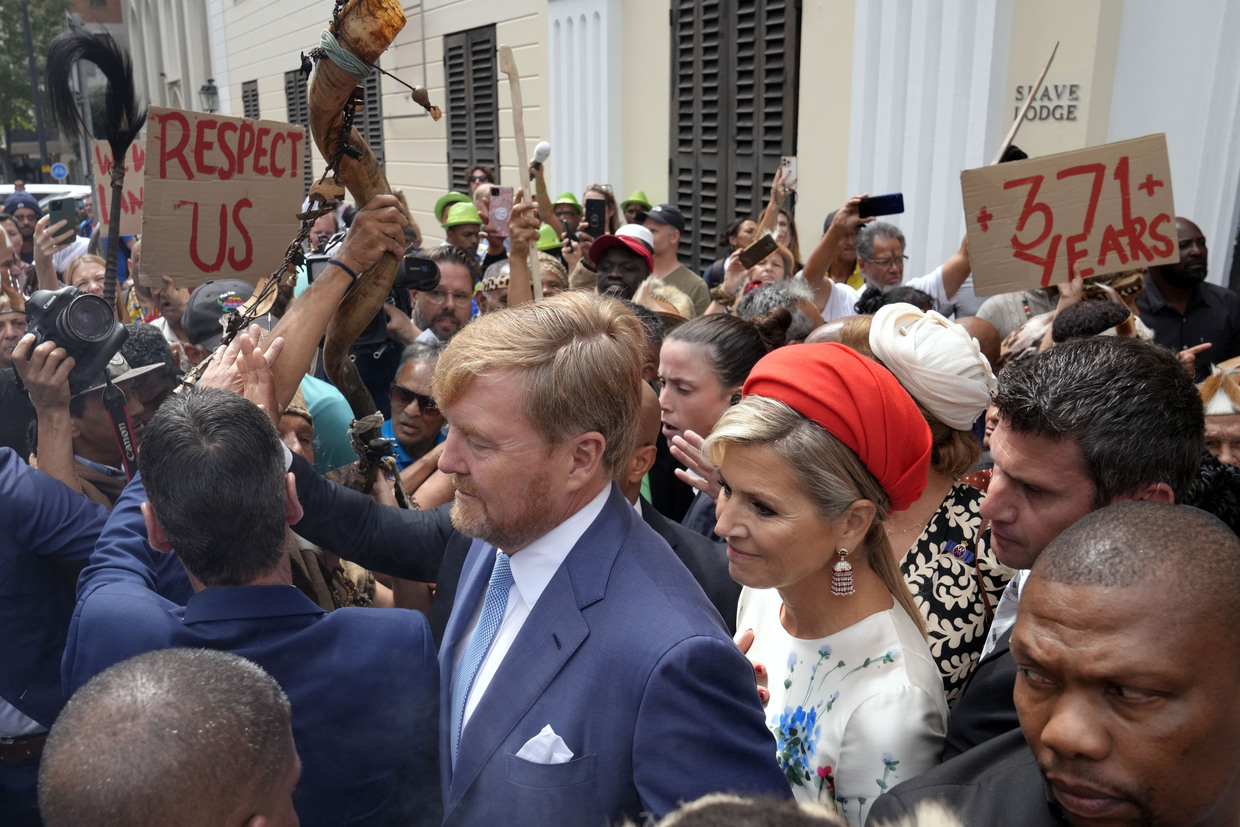
What followed in the country was slavery, the forced labor model, dispossession, and oppression that lasted for 150 years under the Dutch.
Slavery was eventually abolished in South Africa in 1834 when the Slavery Abolition Bill was passed by the British House of Commons and House of Lords. The slaves of the Cape were some of the last to be freed, as the region was one of the last under Commonwealth rule to enact the bill. A four-year transition period followed the enactment of abolition, during which time the former slaves learned trades.
For the Khoi-San, European colonial intrusion, slavery, and forced labor led to the disintegration of their society within a matter of decades.
Decades of frustration for the Khoi-San
Khoi-San chief Neville Felix said it is not surprising the indigenous people raise their voices: “The protests emanated from the frustration of the indigenous people who felt they were left out of any engagements, despite bearing the brunt of slavery.”
“It is not as if they were unaware of the plight of the indigenous people as a circle of elders from the Khoi-San and descendants of slaves held a meeting with Dutch representatives on September 24, our country’s heritage day,” Neville noted. “The Dutch royals displayed their arrogance by not engaging with the descendants of people whose way of life had been irreparably altered through colonialism and dispossession.”
Last year, Khoi-San groups marched to the country’s Constitutional Court and handed over a memorandum in which they demanded that their indigenous rights be recognized, equally applied, and upheld in South Africa. Neville emphasized that the Khoi-San feel they have been neglected and that their rights are not recognized in the South African Constitution.
“The Khoi-San want the Apartheid racial classification of ‘colored’ to be scrapped, and instead are calling for recognition of the self-identification of South African indigenous peoples in the terms chosen by ourselves,” Felix told RT. “By grouping people into the ‘colored’ racial identification category, many descendants of slaves and indigenous people cannot identify with their ancestors.”
Indigenous people feel that the injustices they face in the country now are linked to the injustices they first faced when the Dutch colonized, dispossessed, and murdered their ancestors.

By the mid-1990s, there was a renewed emergence of the awareness of Khoi-San, coinciding with black South African expressions of identity, which found a home in the concept of the ‘African Renaissance.’
According to Felix, this renaissance has been romanticized in South Africa. “The First People are frustrated by a sunset clause limiting land claims to 1913, which ignores the fundamental foundation of when indigenous people were subjected to atrocities aimed at eradicating our knowledge systems while the intellectual property and land were stolen,” he said.
The ‘sunset clause’ Felix referred to falls under Section 25 of the country’s Constitution and has a cutoff date limiting claims for land restitution and redistribution to June 19, 1913, when the Land Act came into effect. The Land Act, sanctioned into law by the British, cemented the extreme inequalities regarding land ownership and use and essentially handed historical land to the European settlers. Since the end of apartheid in 1994, the governing party in the country, the African National Congress (ANC), has sought to redistribute land using Section 25 of the Constitution.
However, the Khoi-San are not recognized in the Constitution as the country’s first peoples, and their land was mostly taken starting in 1652 through successive Dutch and English colonialism. This land dispossession continued after colonialism with racial segregation, sanctioned by law, under Apartheid lasting for most of the twentieth century.
Apartheid laws saw thousands of Khoi-San being removed from areas classified for white occupation. The Khoi-San, dispossessed by the colonialists and oppressed under the white-minority rule in South Africa, want to be first in the queue for land claims but also want recognition that their land, especially large swathes in the Cape colony, was stolen almost as soon as van Riebeeck landed in the country in 1652.
They say this dispossession forced indigenous people out of their families, denied them their right to speak their native language, their culture was ridiculed and they were alienated from their true identity in order to be assimilated into the mainstream. The consequences of these historical issues still have relevance today.
The heckling of the Dutch royals was a stark reminder that while the two countries’ contemporary relations are described as ‘long standing and warm’, historically, the Khoi and San, who faced slavery and oppression as soon as van Riebeeck landed in Cape Town, have unresolved issues regarding the bitter legacy of colonialism.
The impact of slavery today
Many South Africans are the descendants of slaves brought to the Cape Colony from 1653 until 1822, and feelings of marginalization still exist.
Today, the Khoi-San face many challenges, including limited access to information and communication technology services in rural communities, gender-based violence and femicide, teenage pregnancy, drugs and substance abuse, unemployment, HIV/AIDS, and tuberculosis, but it is the centuries-long struggle for land ownership and tenure rights that remains a focal point.
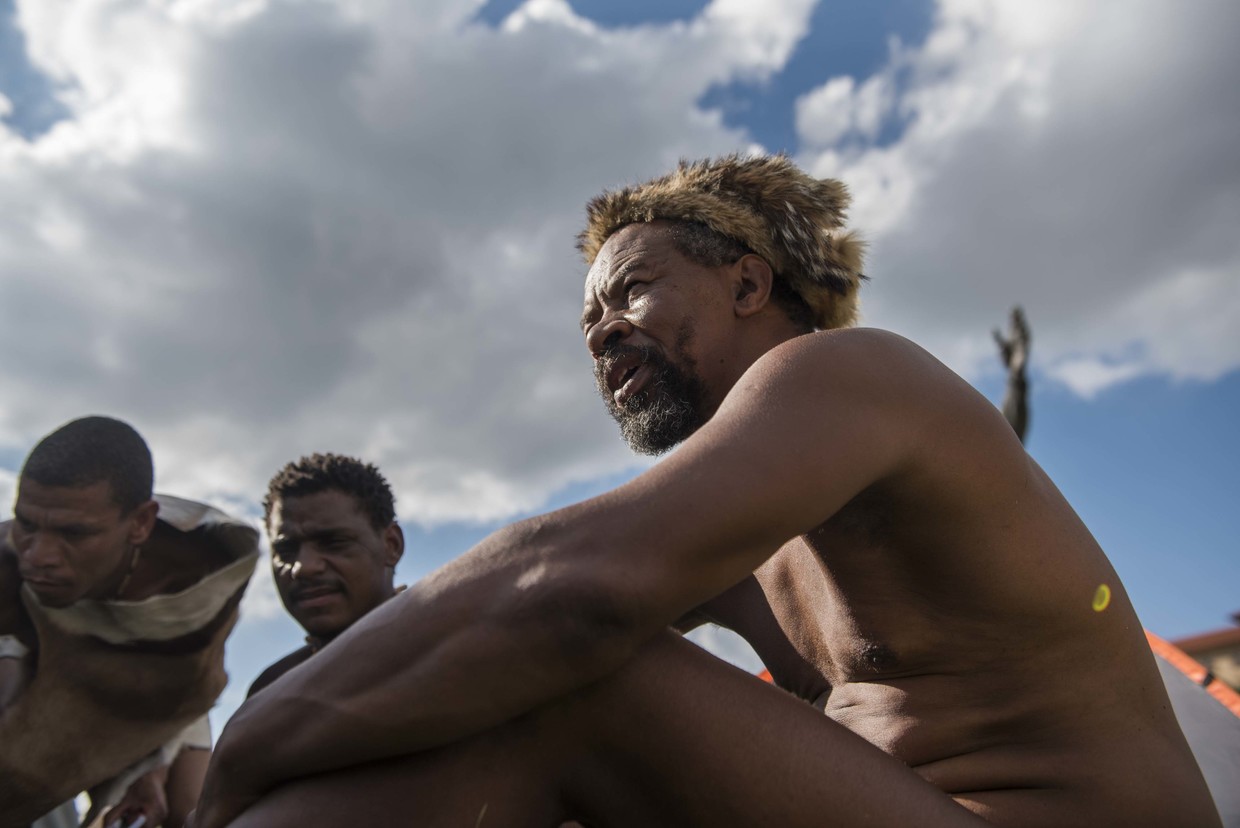
Different Khoi-San groups have occupied land, including Table Mountain National Park, listed as a World Heritage Site, and these matters are being fought in the country’s courts by the government.
Tauriq Jenkins, an indigenous knowledge historian and high commissioner of the Goringhaicona Khoi Khoin Indigenous Traditional Council, said it is understandable that people who are ignored for centuries become angry and frustrated: “The anger with the Dutch royals stemmed from the failure to acknowledge issues related to proper reparative and restorative justice.”
“The undeniable impact of Dutch colonialism led to a ripple effect and indigenous people fleeing the Cape Colony as far as sub-Saharan Africa as the Dutch moved further into the hinterland. There are critical aspects that need to be addressed – slavery, land dispossession, genocide, and forced removal – but there is no acknowledgment of the gross violations that were committed starting more than 300 years ago,” Jenkins told RT.
He also recounted that today the descendants of slaves, the so-called ‘Coloreds in the country’, are still denied their inalienable rights to land and mineral resources.
“The Western Cape is the only province in the country where an African indigenous language is not spoken amongst its people. This linguistic dissolution means that people are bereft of their mother tongue.”
Issues raised by traditional and Khoi-San leaders received widespread media coverage in 2020 when President Ramaphosa established an inter-ministerial task force to respond comprehensively to issues affecting traditional communities.
The country’s deputy president, Paul Mashatile, in an engagement with Khoi-San leaders just days after their confrontation with the Dutch royals, spoke about the issue of land. But Khoi-San leaders argue that the draft Communal Land Bill, meant to address issues of historic land dispossession, is not moving fast enough to address their concerns.
Michael Daiber, general manager of the !Khwa ttu San Culture and Education Center, said the impact of Dutch colonialism is still present in the country.
“There are many unresolved issues in South Africa and southern Africa as a result of Dutch slavery and colonialism. There is a need for these conversations to take place and for the Dutch royals to acknowledge and take responsibility for what has happened and to apologize directly to people so that the healing process can start,” Daiber noted.

